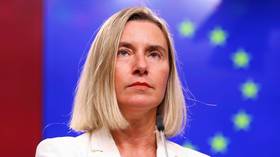Killer flu creators lash out at US ‘censorship’

To censor or not to censor is not the question, when it comes to publishing the details of what could be the deadliest flu virus known to man. What is a matter of debate is who the censor should be – and many oppose America’s monopoly in the field.
Experts from various research fields the world over have voiced their opinions on the publication on the development of a particularly deadly strain of the H5N1 avian flu virus by a team of researchers led by Ron Fouchier at the University of Erasmus in Rotterdam. What makes this version of the infamous virus particularly dangerous to humans is the fact that it is both extremely fatal – with a 50% mortality rate, and highly contagious – unlike the naturally-occurring avian flu. Fouchier initially wanted to publish his research so as to prepare humanity for a potential outbreak of the artificially-made virus, but the US National Science Advisory Board for Biosecurity (NSABB) got involved and asked him to withhold some important details from publication. The US agency expressed concern that information on how to make the virus could end up in the wrong hands, and could be used to develop a biological weapon. Fouchier agreed to remove key details from the methods and results sections of his paper, but questioned whether the US should have a monopoly on censoring the works of research scientists worldwide.His view, and that of fellow virologist AB Osterhaus, were published in Nature Magazine.
“We are not questioning the unprecedented recommendations last month from the US National Science Advisory Board for Biosecurity (NSABB) to remove key details from the methods and results sections of published papers, including our own, submitted to Science. But we do question whether it is appropriate to have one country dominate a discussion that has an impact on scientists and public-health officials worldwide. This discussion should include the perspective of people in regions where H5N1 has infected humans,” Fouchier and Osterhaus wrote in the article
The two scientists noted that the outcome of the discussion on a global scale is difficult to predict as long as opinions vary worldwide. Many European experts have argued that the research should be published in full, and Fouchier and Oberhaus have proposed a group of experts from around the globe discuss issues of such magnitude. John Steinbruner, the Director of the Center for International and Security Studies at the University of Maryland, agrees that the US cannot dictate what can and cannot be published by scientists from all over the world. Instead, he proposed the World Health Organization serve as a regulator for research on a variety of deadly viruses, akin to the NSABB on a global scale.“I believe that the entire process must be regulated by a global health body, ideally the World Health Organization (WHO). Already, a WHO committee oversees all research involving the smallpox virus. A similar, more developed system could work for H5N1 and other deadly pathogens,” Steinbruner wrote. Kwok Yong Yuen of the University of Hong Kong supported NSABB’s decision to prevent the publication of a blueprint for constructing such a deadly virus. However, Kwok also said that the genetic signatures associated with an air-transmissible strain of the virus should be known to the directors of all public health laboratories in the WHO surveillance network. However, all members should sign an agreement of confidentiality prior to this. Kwok admitted that censoring the data would not prevent rogue individuals or states from developing the virus themselves, though it would buy some time.David L. Heyman from the Centre on Global Health Security at Chatham House in London argued that research should continue despite the risks, as scientists will always need to have a strain of each virus to able to develop vaccines. “It is tempting to argue that, for the sake of public health, research that constructs highly pathogenic forms of viruses, such as H5N1, should be squashed. But even if we eliminated H5N1 and destroyed all lab samples, we would still need to consider keeping and producing a vaccine, because the virus could potentially be recreated,” he wrote. On the contrary, a more cautious approach was adopted by a group of experts from the Center for Arms Control and Non-Proliferation of Arizona State University and Rutgers University, who suggested tightening security in labs and curtailing or even terminating research on new biological threats and focusing instead on existing threats. Fouchier and his team developed the now infamous strain of the virus back in September 2011 by infecting ferrets with the avian H5N1 influenza virus. After ten generations, the virus in one group of ferrets mutated and became airborne, making it highly contagious.A naturally-occurring avian flu virus affected poultry in South Asia and the Middle East. Only 600 human cases have been reported so far, but of those infected, over 50% have died.














